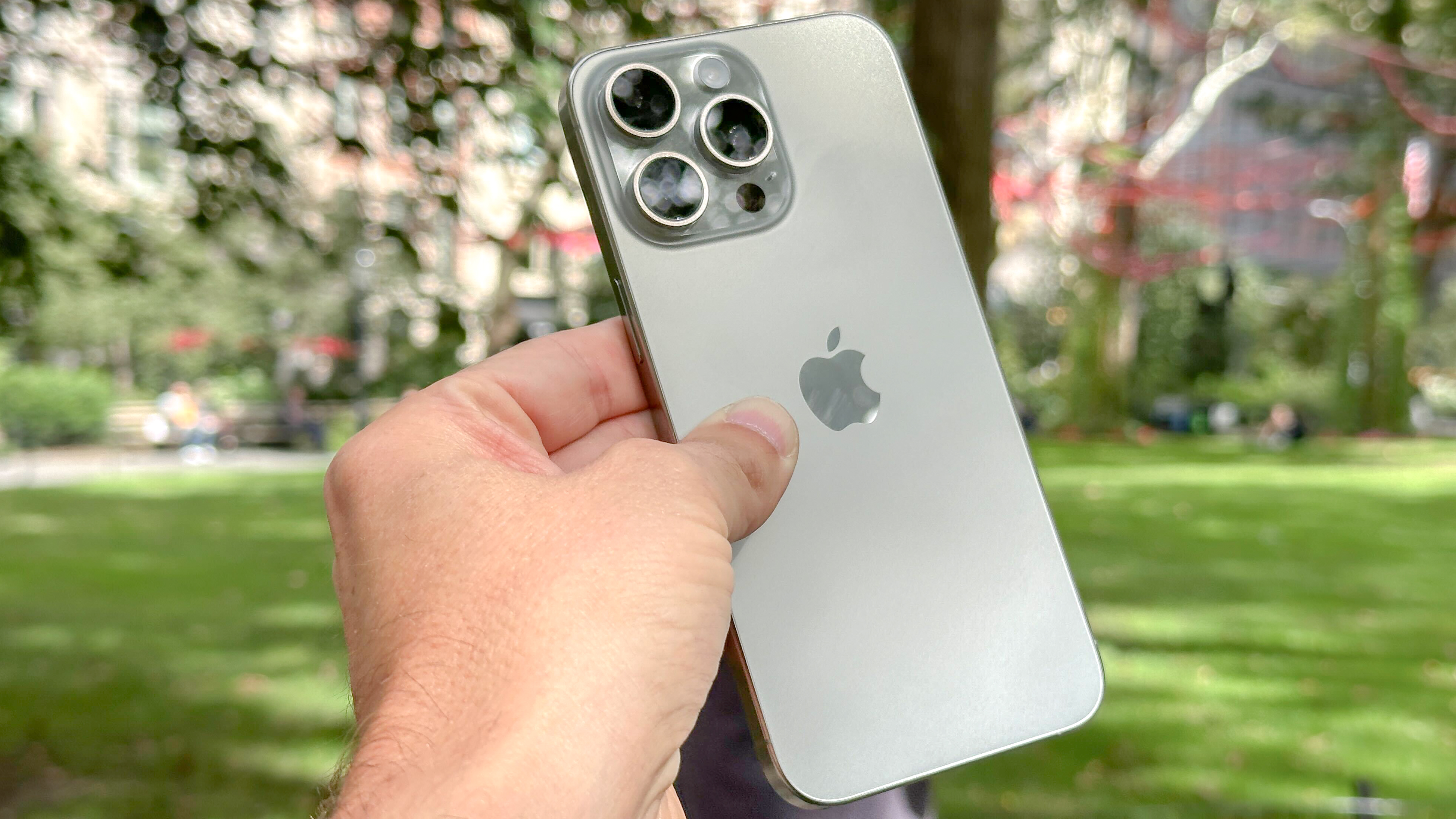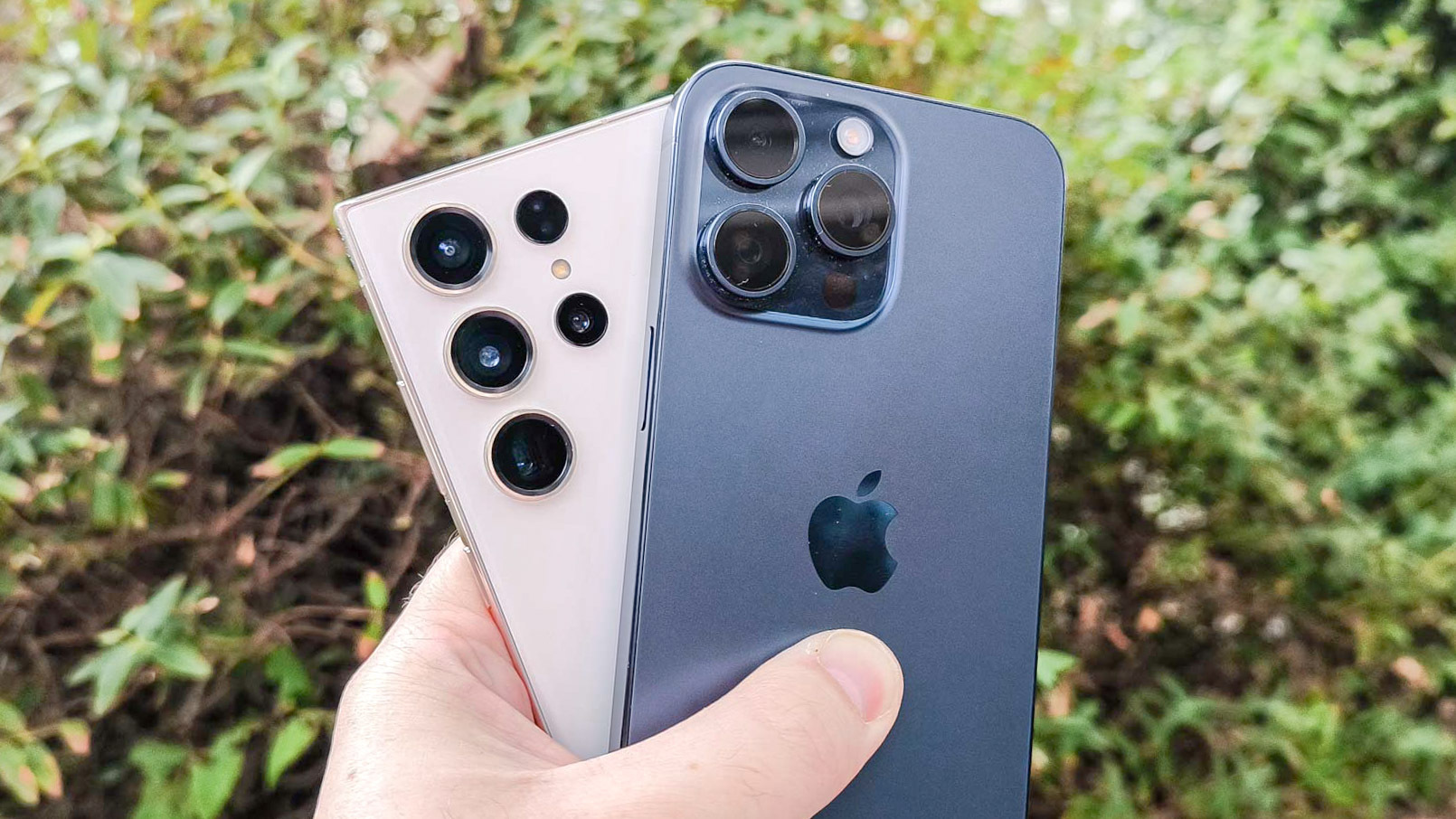This is the one iPhone 15 Pro Max feature that shouldn't be exclusive

The iPhone 15 Pro Max took a big step forward when it arrived last month, but it wasn't necessarily due to features like the tetraprism-based telephoto lens or the more powerful A17 Pro chipset. Rather, it was a more simple move.
Apple upped the storage on the base model to 256GB, finally recognizing that a phone which encourages people to snap lots of high-resolution photos, capture lots of 4K video and carry around lots of important files and apps deserves a lot of capacity.
That's a great move on Apple's part. Too bad it didn't go far enough.
Three other phones joined the iPhone 15 Pro Max as part of this year's iPhone 15 launch, and all of them feature 128GB of storage in their base models — not 256GB. That includes the iPhone 15 Pro, which may lack the Pro Max's superior telephoto lens but still serves an audience of power users with big storage needs.
I'm of the opinion that any phone that carries around the Pro label but skimps on storage shouldn't have that moniker, so of course, Apple should have equipped the iPhone 15 Pro with 256GB. And while I recognize the argument for holding back higher capacities from cheaper models like the iPhone 15 and iPhone 15 Plus, I think it would have been a customer-friendly gesture to offer more storage there, too. It certainly would have set Apple apart from other phone makes and maybe even encouraged some of its rivals to follow suit.
The challenge to adding more capacity to a smartphone is that larger drives add to the cost of the device. Still, I don't think it's as much as phone makers would have you believe. Apple charges an extra $100 if you want your iPhone 15 to come with 256GB of storage instead of 128GB. I find it hard to believe that reflects the actual cost of swapping in the extra capacity.
How the iPhone compares to other top smartphones

Apple has a rather complicated history when it comes to how much storage it includes with its smartphones. Up until the iPhone 13, Apple sold some flagship phones with just 64GB of storage. The company made that switch this decade! Up until the iPhone 12 was dropped from the iPhone lineup with the iPhone 15's arrival, Apple was perfectly happy to sell you a 64GB iPhone and act like it was a fair trade. In fact, the iPhone SE still comes with 64GB of storage, when many other phones in its price range offer twice that amount.
Get instant access to breaking news, the hottest reviews, great deals and helpful tips.
Other phone makers are ahead of Apple in this regard. Both the Galaxy S23 Plus and Galaxy S23 Ultra from Samsung start with 256GB of storage, as does the Galaxy Z Fold 5. (I mean, for $1,799, it had better come with lots of storage.) While Google follows suit with its Google Pixel Fold, the latest Pixel 8 models also start with a pedestrian 128GB amount of storage. As my colleague John Velasco observed, that's one area where the Pixel 8 Pro in particular misses the mark.
| Row 0 - Cell 0 | Price for 128GB model | Price for 256GB model | Price for 512GB model |
| iPhone 15 | $799 | $899 | $1,099 |
| Galaxy S23 | $799 | $859 | N/A |
| Pixel 8 | $699 | $759 | N/A |
| OnePlus 11 | $699 | $799 | N/A |
But Apple is also behind the times when it comes to what it costs to add storage for your phone. If you want a 256GB Galaxy S23, it only costs an extra $60 on top of the base model $799 starting price. Upgrading from the base model Pixel 8 — whether the standard Pixel 8 or Pixel 8 Pro — also takes another $60 above the 128GB version. With Apple, you pay $100 more to jump to the 256GB version, whether you're getting the basic iPhone 15 or the Pro version. And a 512GB iPhone 15 Pro costs $300 more than the 128GB base model. For Apple, upselling people on storage sounds like a lucrative business.
Why storage matters
It shouldn't have to be this way, especially given how the smartphone has evolved. These devices contain everything that's near and dear to us, from photos to music to important files. Yes, there are cloud service where you can offload things, but if there's something you want close at hand, you keep it on your phone because your phone is always close to you. And with things like photos capturing more detail at higher resolutions, the need for extra storage is more acute than ever.
Some phone makers are starting to recognizing this. I just wish Apple was among them.
So if I had a wish for the iPhone 16, it wouldn't necessarily be for more processing power or longer battery life. The iPhone already does those things very well. And after the camera improvements Apple introduced to the iPhone 15, even the base model iPhone is one of the best camera phones out there. Instead, I want Apple to rethink its position toward on-device storage and start giving the iPhone the kind of capacity that reflects how people are using the company's handsets.
More from Tom's Guide
- iPhone 16 Ultra: What we know so far
- iPhone 16 Pro could get this Pro Max-exclusive feature
- iPhone 15 can turn photos you’ve already taken into portraits
Philip Michaels is a Managing Editor at Tom's Guide. He's been covering personal technology since 1999 and was in the building when Steve Jobs showed off the iPhone for the first time. He's been evaluating smartphones since that first iPhone debuted in 2007, and he's been following phone carriers and smartphone plans since 2015. He has strong opinions about Apple, the Oakland Athletics, old movies and proper butchery techniques. Follow him at @PhilipMichaels.

